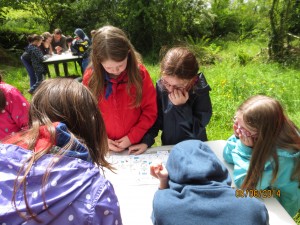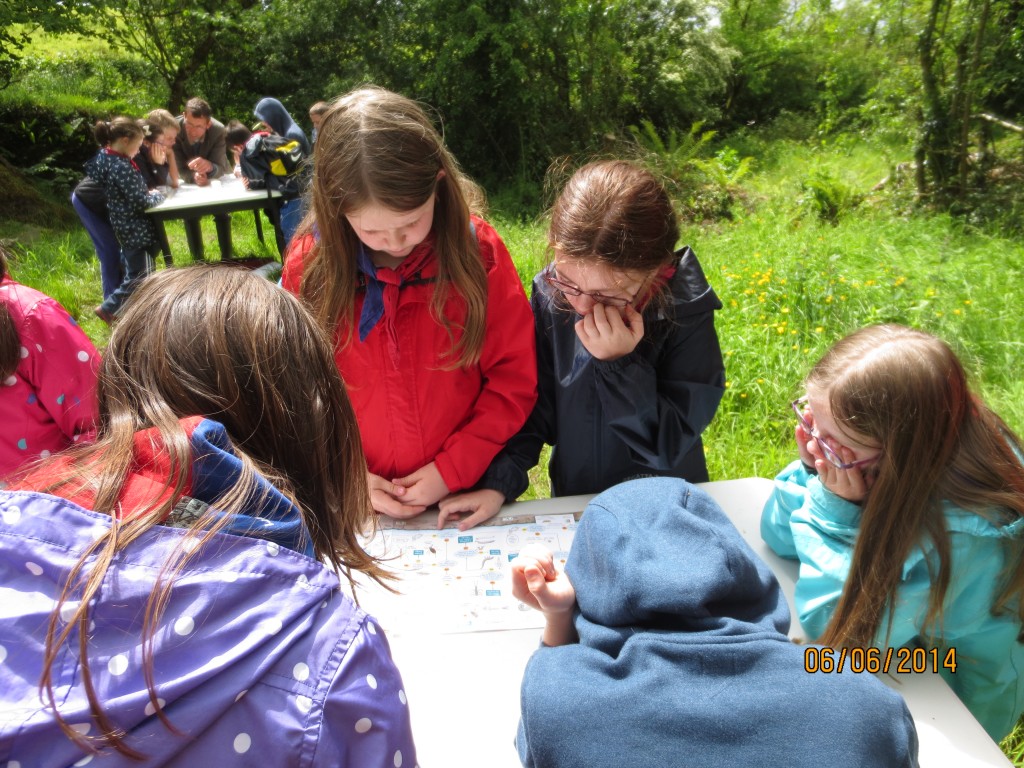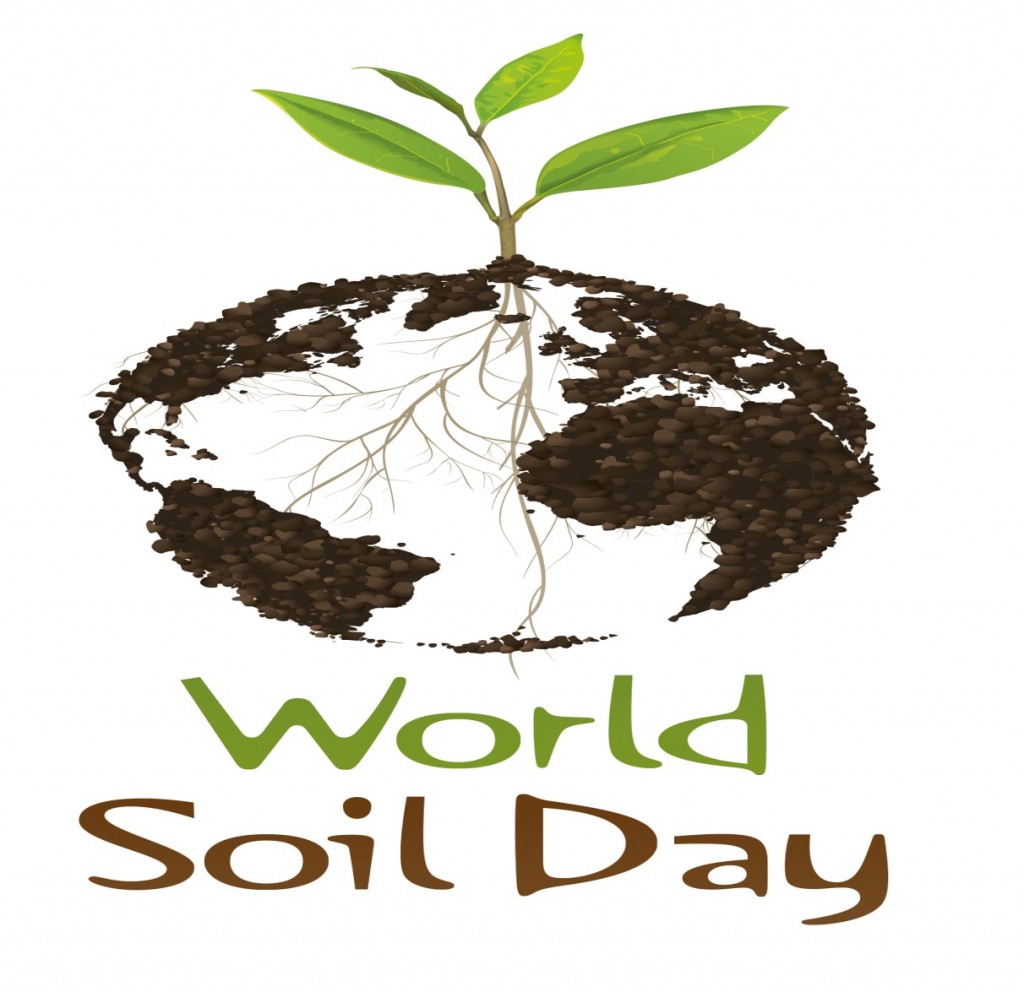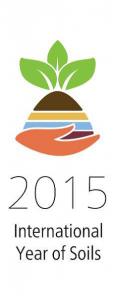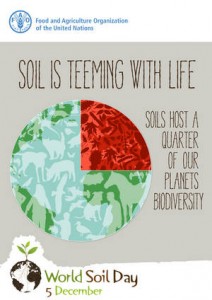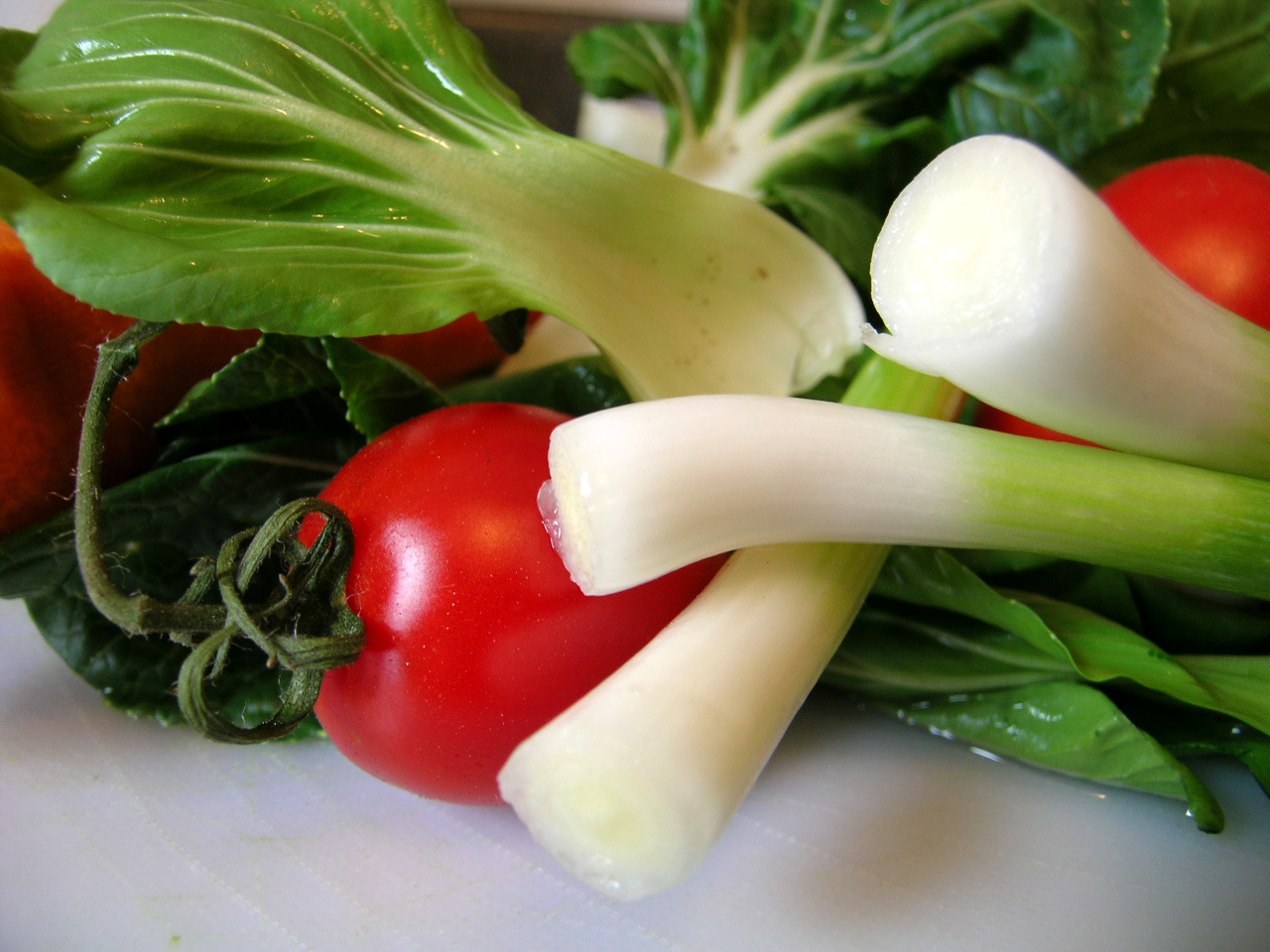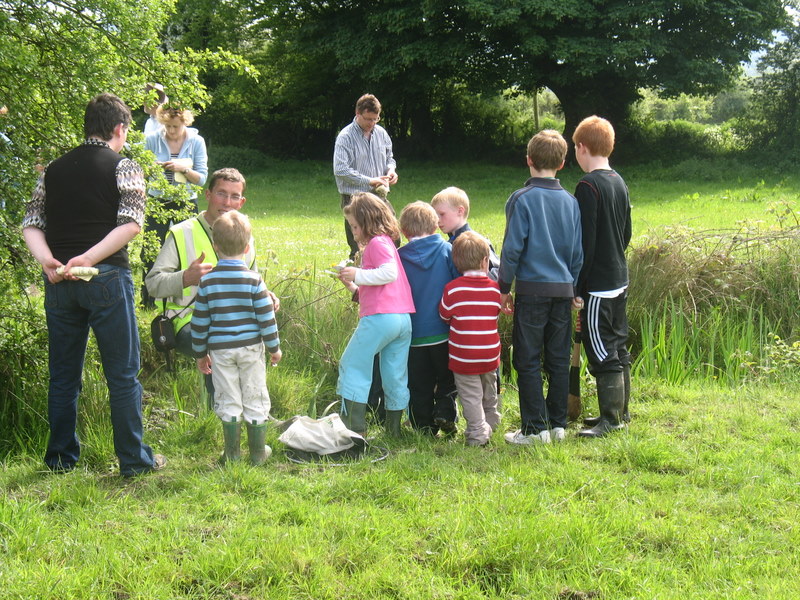Discovery Primary Science and Maths originated in 2003 with the aim of introducing primary school students to science in a practical, hands-on, enjoyable and interactive way.
We at Cloncannon Biofarm are delighted to receive accreditation as a Discovery Primary Science Centre in July 2015. We are committed to putting every ounce of effort and resources into providing the visiting students with highly engaging, scientifically stimulating activities. We aim to load the experience with mystery and fun.
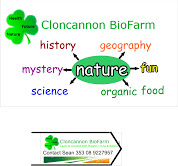
Workshops:
1. Observing, identifying and exploring a variety of Living Things. Interconnectivity. (all age groups, hand lenses, ID charts) 20 minutes.
2. Why Organic. Stimulate questioning of benefits to wildlife and people. Measurement of ‘Food miles’/ measure from garden to kitchen (use metre stick) 20 minutes.
3. Exploring Soil; its formation; creatures within; Use of Microscope. Seed sowing and growing healthy food for healthy diets.
(all classes) 20 minutes.
4. Geography landforms, waterways and evidence of landscape history. Maps and compass. Senior classes. 20 minutes.
5. Trees (what they give us), and in farming heritage. Native tree ID skills.(all classes) 20 min.
6. Re-enacting life in the Ringfort. Pupils engage in willow weaving, iron working, leather use, fencing with hazel, picking wild food. Emphasing the theme ‘needs and wants’. (all classes) 20min.
7. Investigate survival strategies of mini beasts in the ponds and river. (senior classes) 30 min.
These activities will be led by Sean O’ Farrell and Caroline (Msc. Ecology). Equipment will be provided. Teacher notes and pupil material are provided. The Cost is 6 Euro per student.
Activities links to the SESE/Science and Maths Curriculum and details of the curriculum skills that will be developed by participants:
Activity 1: will engage students in Observing, Exploring, Communicating and understanding connections in the Natural Environment under the Strands – Shape and Space; Numbers; Measures and Data.
Activity 2: (Why Organic) will engage students in Applying and Problem solving; Communicating and Expressing; Reasoning and Understanding.
The Strands addressed include Shape and Space (spacial awareness – food miles); Numbers; Measures (distance) and Data (representing and intrepretating data).
Activity 3: (Exploring Soil) will engage students in Reasoning; Connecting and Understanding issues around food production and health.
The Strands addressed include Numbers (creatures in the soil), Measures (area, time), Data – interpretating relationships.
Activity 4: (Geography Landforms) will engage in Observing, Connecting and Understanding landscape features and Time scales.
The Strands linked to include Shape and Space (special awareness), angles or rounded hill tops etc.; Measures – time, area, length; Data – representing and interpreting.
Activity 5: (Trees) Our Native trees on the Organic farm. This activity will engage students in Observing, Applying and Problem Solving in relation to the services trees provide to humans and the Planet; Communicating and Expressing; and ‘Connecting’ life on Earth.
The Strands linked to include: Shape and Space – different tree shapes and global environmental factors. Numbers –area, time; Measures – time and trees in cultural history; Data – interpreting data relating to the significance of trees.
Activity 6 (The Ringfort). The activities the students get engaged in on the ringfort engages them in Applying and Problem Solving around the way current society uses the earths’ resources compared to the inhabitants of the ringfort; Communicating and Expressing; Understanding ‘change’ over time and future challenges.
The Strands that this activity link to include: Shape and Space – special awareness, also 3D; Numbers – populations of people; Measures – area, time, capacity; Data – representing and interprerting.
Activity 7 (Mini beasts in the pond and river). This activity engages students in skills of Applying and Problem Solving in relation to forms of pollution and survival of creatures; Communicating and Expressing; Integrating and Connecting. Reasoning and Understanding the survival strategies of the various species.
The Strands linked to include: Space and Shape – features impacting on the pond/river habitat; Numbers of creatures/ food sources and food chains; Measures – size of mini beasts; and Data – recording and interpreting.
Outdoor Learning has the potential to engage students in better understanding many facets of the Primary School curriculum and at the same time broaden the development potential of all students.
